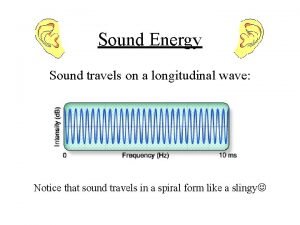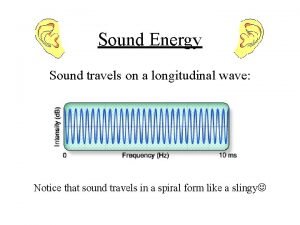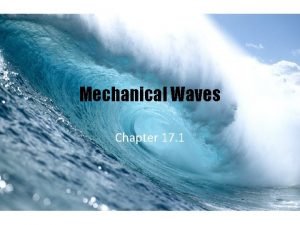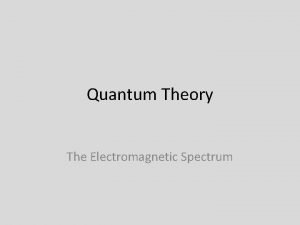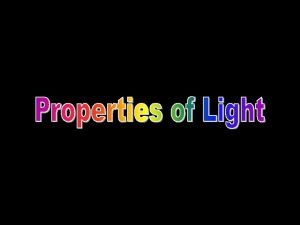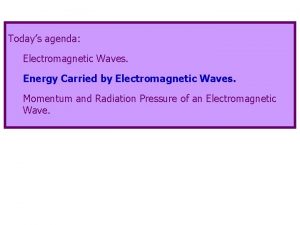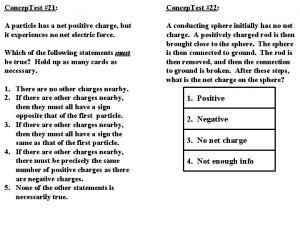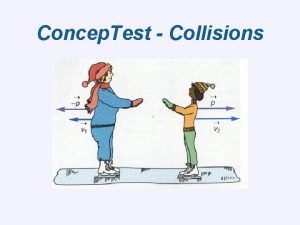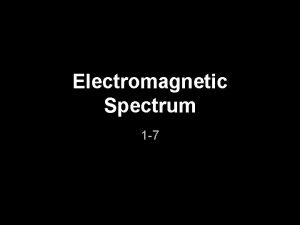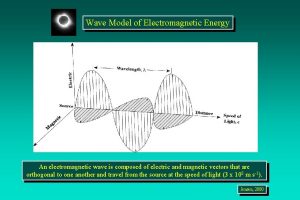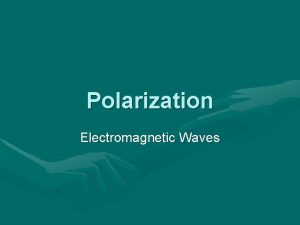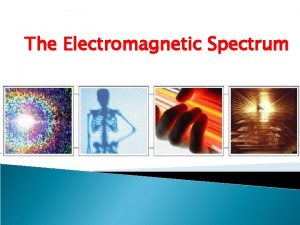Concep Test 37 An electromagnetic wave travels from












- Slides: 12

Concep. Test #37: An electromagnetic wave travels from region 1 with index of refraction n 1 into region 2 with index of refraction n 2. The index of refraction in region 1 is smaller than the index of refraction in region 2 (n 1 < n 2). Consider the following choices: a) Where is the speed of the electromagnetic wave faster? Next week, we’ll see that the frequency of the electromagnetic wave is the same in both regions. b) Where is the wavelength of the electromagnetic wave larger?

Concep. Test #38: Consider light that is incident (i) on the interface between one medium and another, with n 1 < n 2. We saw previously that when a wave goes from one medium into another, part of the wave could be reflected (r) and part of the wave could be transmitted (t). Which of the following is true about the reflected wave in this case? 1. No reflected wave 2. Reflected wave inverted with respect to incident wave 3. Reflected wave NOT inverted with respect to incident wave

Concep. Test #39: Light in air is normally incident onto a thin film of oil (thickness 500 nm) spread on glass, as shown. (In the figure, the rays are drawn at angles other than straight down and straight up for some clarity. ) The indices of refraction are noil = 1. 20 and nglass= 1. 50. Which of the following is the geometrical path length difference between the light wave reflected from the air-oil interface and the light wave reflected from the oilglass interface?

Example: Colors in Thin Film Interference Light in air is normally incident onto a thin film of oil (thickness 500 nm) spread on glass, as shown. The indices of refraction are noil = 1. 20 and nglass= 1. 50. Which wavelengths of light are most strongly reflected?

TWO (Source, Slit, Wave, Phasor) Interference • Two waves two phasors • Same amplitude • Same frequency/wavelength Totally Constructive Interference Totally Destructive Interference “brightest”; “loudest”; “highest”; “most intense”; “strongly reflected”; etc. “dimmest”; “softest”; “lowest”; “least intense”, etc.

Concep. Test #40: A (triangular) thin film of oil is surrounded by air on all sides. Visible light is reflected from (essentially) normal incidence from the “top” of the film and from the “bottom” of the film. Consider the following choices: a) What color will you see at the left (thinnest) edge of the film? b) Starting from the left end of the film and moving to the right, what is the next color you will see?

Example: More Colors in Thin Films A (triangular) thin film of oil is surrounded by air on all sides. Visible light is reflected from (essentially) normal incidence from the “top” of the film and from the “bottom” of the film. The thin film has a maximum thickness of 1700 nm and index of refraction 1. 40. How many red bands will you see (in normal incidence)? To see reflection, must have

A Concep. Test #41: Two speakers are driven by the same amplifier, and are 3 m apart as shown. ● Point A is 4 m away from the line connecting the speakers, along the bisector of that line. Point B is 4 m directly in front of one of the speakers. Consider the following choices for the amplitude of the combined waves from both speakers (use vsound = 340 m/s) : 1. Maximum 2. Minimum 3. Neither max nor. min 4. Not enough info a) frequency = 340 Hz, amplitude at A? b) frequency = 340 Hz, amplitude at B? c) frequency = 170 Hz, amplitude at A? d) frequency = 170 Hz, amplitude at B? 3 m B ●

Two Slit/Two Source Interference in the “far-field” regime: Young’s Double Slit Experiment & Fraunhofer Limit. • Uniform slits, distance d apart. • Light of wavelength l. • “Thin” slits (width of slit small compared to distance between slits; more on slit width Friday) • Screen L away x 1 x 2 d L q y

“Far field” limit, continued. x 1 essentially parallel to x 2. Special case: L >> d x 1 d Path length difference between adjacent slits q x 2

Two-Slit/Source Interference Maximums and Minimums (Far Field) For MAXIMUM amplitude of combined waves (“totally constructive interference”) from two sources, need: Locations of maxima Evenly spaced. For MINUMUM amplitude of combined waves (“totally destructive interference”) from two sources, need: Locations of minima Evenly spaced between maxima.

Three Slit/Source Interference? Maximum? Now have THREE phasors Identical to before; including positions of “primary” maxima Minima? Try results in: NOT completely destructive! Can three phasors zero?
 Mechanical and electromagnetic waves
Mechanical and electromagnetic waves Examples of mechanical wave
Examples of mechanical wave Ito ay map
Ito ay map Sound energy travels on a wave
Sound energy travels on a wave What is pitch in sound
What is pitch in sound Wave crest
Wave crest One full wavelength
One full wavelength Electromagnetic waves are longitudinal waves true or false
Electromagnetic waves are longitudinal waves true or false Electromagnetic spectrum song lyrics
Electromagnetic spectrum song lyrics Wavelength of electromagnetic radiation formula
Wavelength of electromagnetic radiation formula Is light an electromagnetic wave
Is light an electromagnetic wave Energy density of em waves
Energy density of em waves Phổ điện từ
Phổ điện từ



